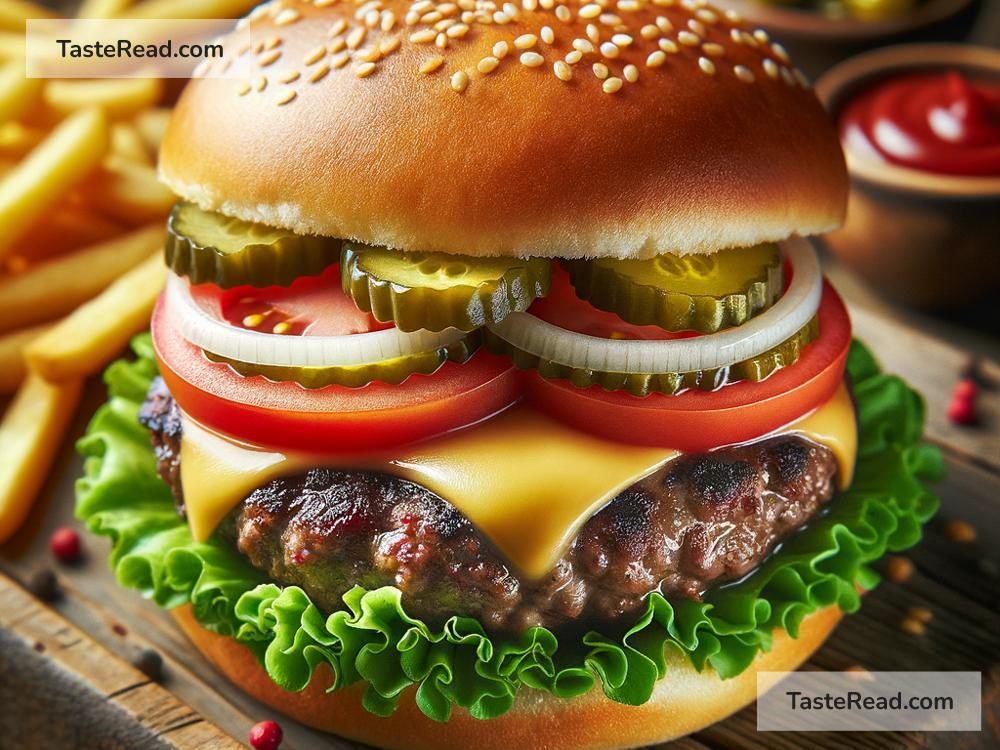The History of the Hamburger
The hamburger is one of the most famous foods in the world. It’s a symbol of fast food, fun, and convenience. Almost everyone has eaten one, but do you know where it came from? The history of the hamburger is an interesting story that takes us across time and space. In this blog, we’ll explore how this delicious creation came to be.
Where It All Began: Hamburg, Germany
The word “hamburger” has its roots in Hamburg, Germany. In the early 19th century, Hamburg was a busy port city where trade was thriving. Around this time, German sailors brought a dish called “Hamburg steak” to America. Hamburg steak was made by grinding beef and seasoning it with spices. People back then would eat it raw or cooked, and it was considered a luxury food.
This dish was loved by many immigrants who moved to America, where it evolved into something unique. While the original Hamburg steak was not served with bread, Americans soon made changes that led to the modern burger we know today.
The Hamburger Comes to America
When German immigrants came to the United States in the late 19th and early 20th century, they brought their food traditions with them. The Hamburg steak quickly gained popularity in American restaurants. But here’s where the story takes a twist: Americans started serving the steak between two slices of bread. Why? It made the meal easy to eat on the go, which was important in a time when people were looking for quick, portable food options.
It’s unclear exactly who made the first “Hamburg steak sandwich,” but there are several claims as to who invented the hamburger as we know it today. Let’s take a closer look at some contenders.
Who Invented the Hamburger?
There is no clear answer to who truly invented the hamburger, but there are some strong claims:
-
Louis Lassen of Connecticut (1900): Many people credit Louis Lassen, the owner of a small lunch stand called Louis’ Lunch in New Haven, Connecticut, as the creator of the hamburger in 1900. One story goes that a customer asked for something quick and portable. Louis served him a ground beef patty between two pieces of toasted bread. Louis’ Lunch still exists today, and they claim to serve the first-ever hamburger.
-
The Menches Brothers (1885): Frank and Charles Menches, two brothers from Ohio, say they created the hamburger at a fair in Hamburg, New York, in 1885. The story goes that they were selling sandwiches made with sausage, but they ran out. Instead, they used ground beef, mixed it with coffee and spices, and placed it on a bun. They called it the “hamburger” after the fair’s location.
-
Oscar Weber Bilby of Oklahoma (1891): Some credit Oscar Bilby as the first person to serve a hamburger on a bun. In 1891, Bilby reportedly used a soft bread bun instead of regular sliced bread to hold a beef patty. This small change helped create the modern hamburger’s look and feel.
The Hamburger Goes Mainstream
While the hamburger began as a fairground snack and local specialty, it didn’t take long for it to become a nationwide favorite. Fast food restaurants played a major role in turning the hamburger into the iconic American food we know today.
In 1921, a man named Billy Ingram and his business partner Walter Anderson opened a tiny restaurant in Wichita, Kansas. This restaurant was called White Castle, and it became the first fast-food chain in the United States. White Castle sold small square hamburgers called “sliders” for just five cents each. They focused on making their burgers affordable and consistent, so customers always knew what to expect. The hamburger became wildly popular.
The Rise of Modern Fast Food
By the mid-20th century, hamburgers were everywhere. The fast-food industry exploded, fueled by companies like McDonald’s, Burger King, and Wendy’s. McDonald’s, in particular, changed the way people thought about hamburgers. Founded by brothers Richard and Maurice McDonald in the 1940s and later expanded by Ray Kroc, McDonald’s introduced innovations like assembly-line cooking and drive-thru service. Suddenly, people could get a hot, tasty hamburger in just a few minutes.
Today, fast-food restaurants sell millions of hamburgers every day. They come in all shapes and sizes, with endless toppings and variations. You can find burgers made with chicken, fish, vegetables, and even plant-based patties.
The Hamburger Around the World
While the hamburger was born in America, it has spread across the globe. In every corner of the world, you’ll find someone enjoying a burger. From Japan’s teriyaki burgers to India’s vegetarian paneer burgers, each country has added its own twist to this famous food.
Interestingly, hamburgers continue to evolve. High-end restaurants sometimes serve gourmet burgers with fancy ingredients like truffle oil, foie gras, or gold leaf. At the same time, fast-food chains keep finding ways to make burgers faster, cheaper, and more convenient.
Closing Thoughts
The history of the hamburger is a tale of invention and innovation. What started as a humble Hamburg steak has become one of the most popular foods in the world. From street fairs to fast-food chains, the hamburger proves that simplicity combined with creativity can go a long way.
So, the next time you bite into a burger, take a moment to appreciate its fascinating journey. It’s more than just beef and bread—it’s a piece of history you can taste!


